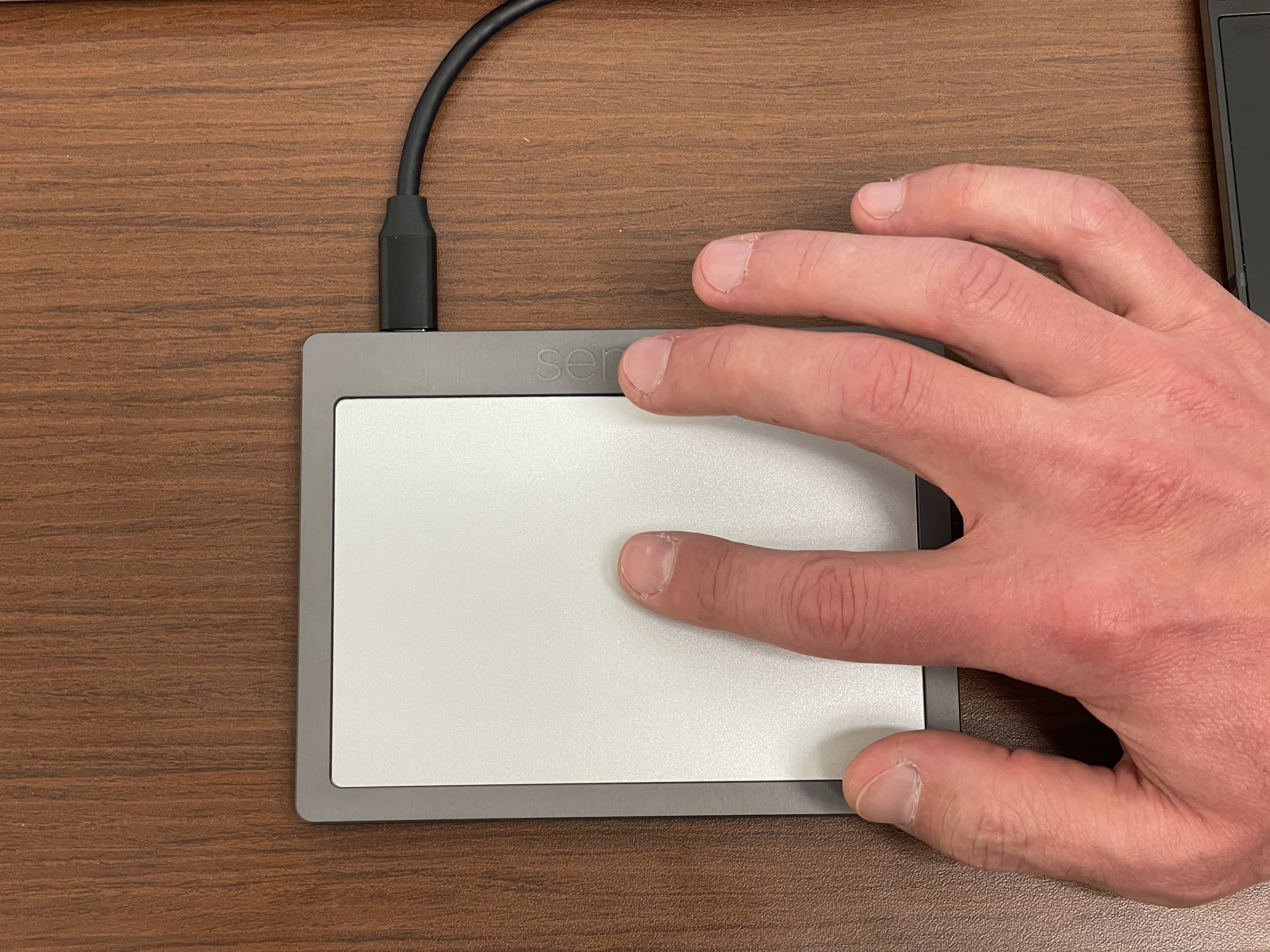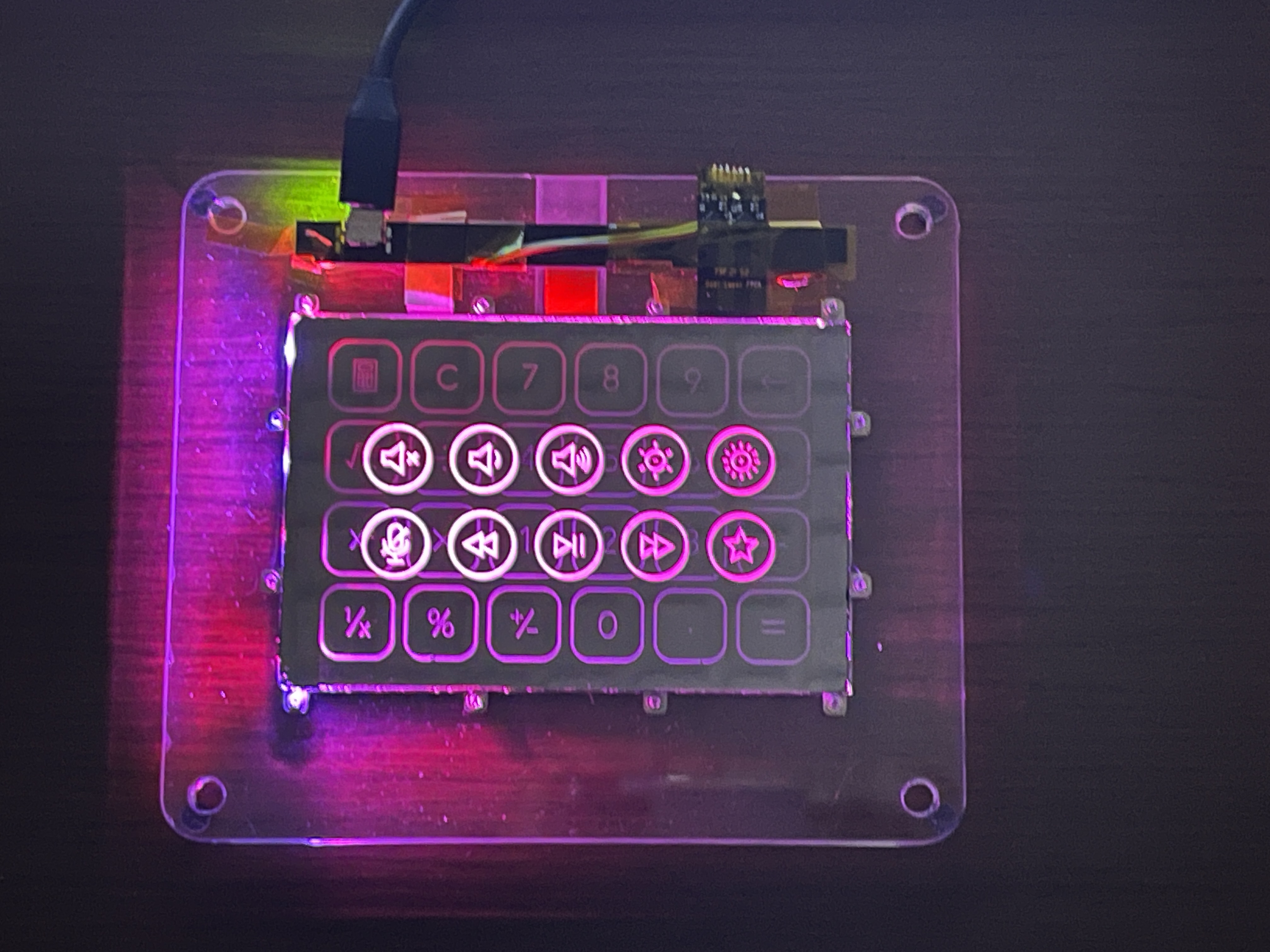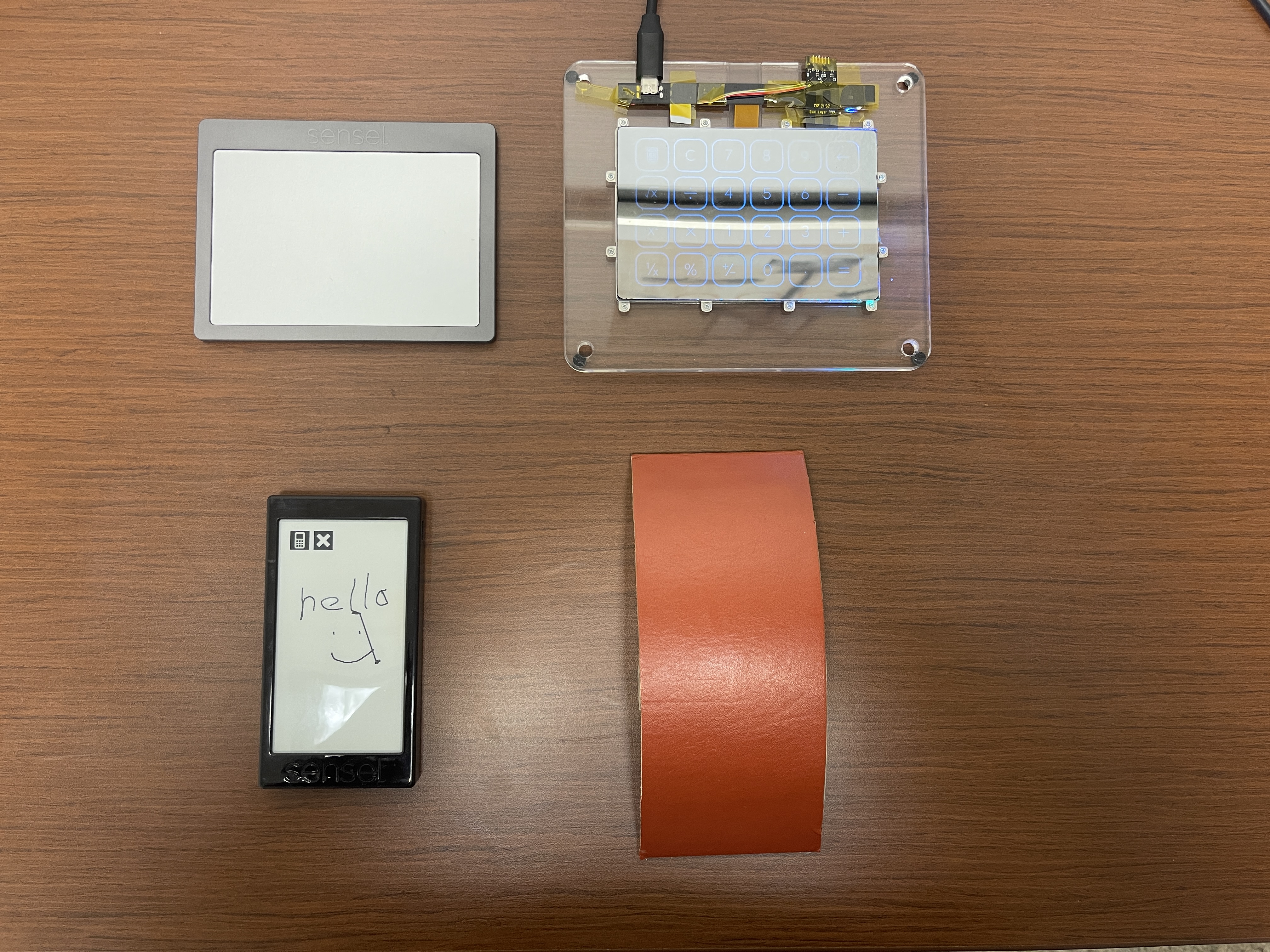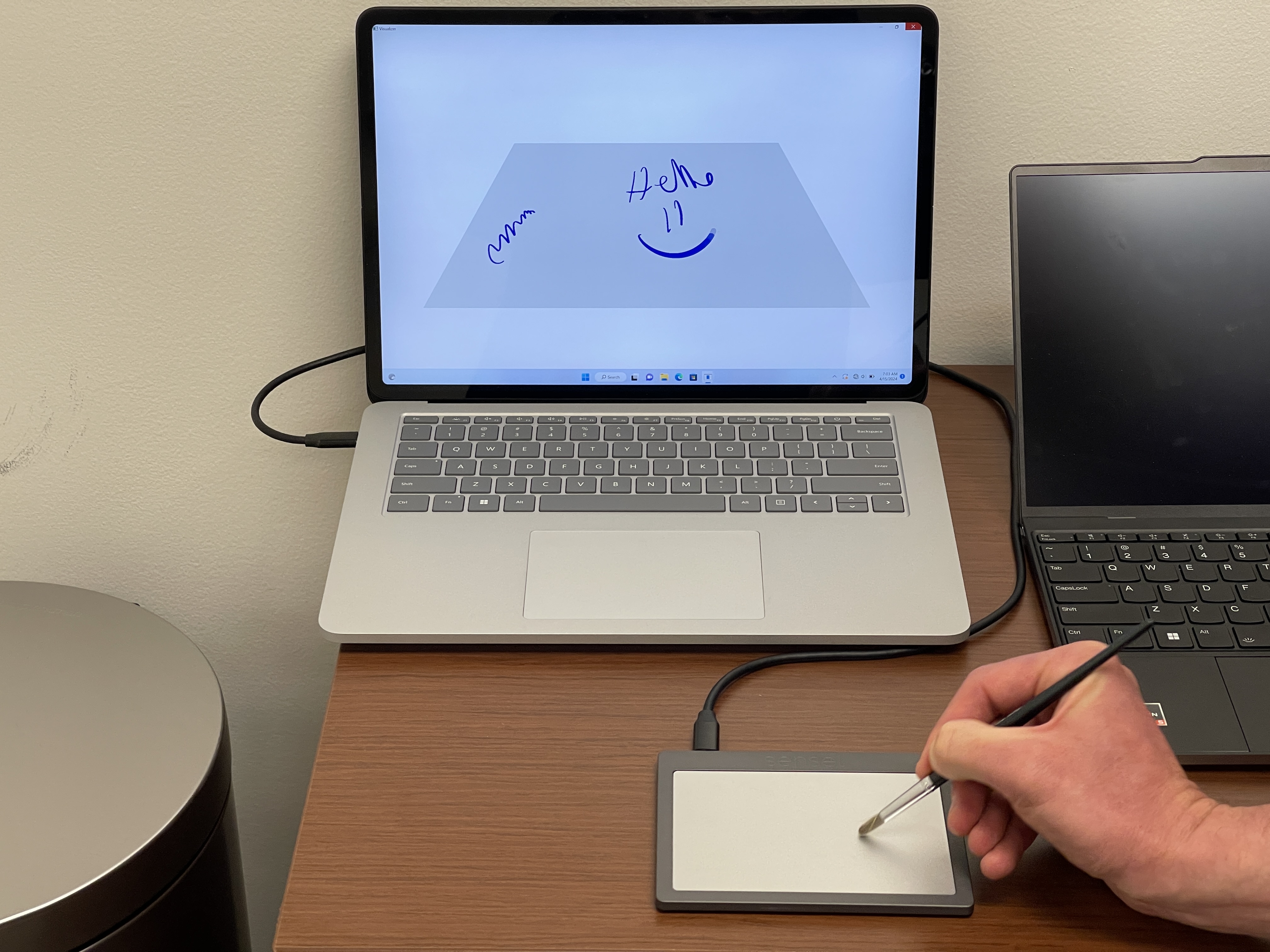
The large, multitouch trackpad was once synonymous with the MacBook. And starting in 2015, that has also included a haptic feedback trackpad, which simulates a physical click via a motorized engine under the surface. It was quite the revelation, and despite some initial skepticism, it really took off.
As you would expect, Apple held a patent on the technology, enjoying a five-year start ahead of other laptops. The first attempts at haptic feedback trackpads on Windows laptops weren’t promising either.
Then a company called Sensel came around, and started to turn the tide in a huge way. It’s easy to forget that small component companies like Sensel exist, but they’re making a huge difference in taking MacBooks down a peg and modernizing the competition. I got an inside look at how the company got to where it is, and where it’s heading in the future.
Founded on evolving interaction

Sensel was established in 2013, after its co-founders gained experience working at Amazon’s Lab 126. Sensel’s goal at the time was to change multitouch interfaces to be more sensitive and subtle. They did it with what’s now come to be known as their PressureGrid technology.
Think of this technology like you would a computer monitor’s resolution, where each spot on a touchpad has a pixel. Touchpads at the time had low resolution and poor linearity, which could result in less accurate touches and poor finger tracking. Sensel’s technology aimed to change that b y essentially increasing the resolution and tracking of a touchpad, without extra cost for both Sensel and its partners.
But that’s just what it did for touchpads. You’ve probably heard of it already, but Sensel is also known for the Morph, a multitouch pressure-sensing accessory that looks like a giant touchpad. It is this product that put Sensel on the map, as it was the first product consumers could buy.
The Morph arrived around 2015, but since then, Sensel has evolved to ship its technology in PC products. Its first haptic trackpad shipped in the ThinkPad X1 Titanium Yoga, which was the world’s first premium haptic touchpad in a Windows PC. In 2021, Sensel also landed its first licensing deal with Microsoft, providing the haptic trackpad on the Surface Laptop Studio.
With those partners, Sensel has since shifted to a solution-as-a-service business model, providing hardware, software, mechanical, and manufacturing support for haptic trackpads to partners like Lenovo, and Dell. It’s now a leader in this area. Products like the ThinkPad X1 Fold 16, Z13 and Z16 Gen 2, Surface Laptop Studio 2, and XPS 16, all feature Sensel technology.
How Sensel’s technology is better than its rivals

Haptic touchpads have no physical moving parts, but there are a few pillars that make them special and help them excel beyond the competition. There’s touch sensing, which is used to track your finger, force sensing, which is what triggers haptics at the right moment, and finally, the haptics itself.
The perfect combination of these three is important. If you’re even 10 milliseconds slow or fast with force sensing, there’s a delay and you’ll feel like your haptic touchpad isn’t working right.
Senel’s competitors have traditionally needed to partner with force sensing and haptics suppliers to provide haptic force pads in laptops, but these can result in poor performance and high costs since it involves multiple technologies from different companies coming together for one solution. I demoed a laptop that had a haptic trackpad with Sensel’s technology, and another without it, and I immediately felt the difference. The laptop with Sensel’s feels smoother, more natural, and less “buzzy.”

Sensel is the only one that brings all three of these pillars together to make the perfect haptic touchpad. Yet at the same time, it also allows laptop makers to tune it to their liking.
Companies like Lenovo would come to Sensel for ideas on things like the size of the touchpads, the features, and the overall look, and Sensel would provide the mechanical, electrical, software, and firmware aspects while laptop makers do the industrial design. Sensel goes as far as to travel to the manufacturer when the production is started to make sure everything works properly.

Apple, though, has been doing in-house haptic touchpads for a while, so I asked Sensel about what makes its technology special. Showing me a cutout of the trackpad in a MacBook Pro, I saw for myself. Sensel’s haptic touchpads are a lot thinner and save more space, hence they are a lot cheaper to make.
Sensel also claims that the DirectDrive technology powering its trackpads has stronger haptics and as much as 315% higher output than Apple’s. Things like Sensel’s larger haptic magnetic coils, and the software being able to fire the coils at different strengths and at the same time, are what contribute to that.
Cool concepts and an external haptic touchpad
As part of this story, Sensel allowed me to use a haptic touchpad evaluation kit. This is essentially an external haptic touchpad like the Apple Magic Trackpad 2. It’s not an official product, though, and even though Sensel tells me it’s considering it as a standalone touchpad, funding and other aspects are holding it back from doing so.
I took it home with me and used it for a week while writing this story, and it felt better than what Apple has done with its MacBooks. This is mainly thanks to the Click Composer software that Sensel bundled with it. This software is the same provided to Sensel customers, allowing for customization and things like creating unique haptic clicks. I could change the click force, the haptics intensity, and the haptics frequency, and even choose presets to match that of the MacBook’s touchpad.
It’s this level of customization that makes Sensel’s haptic trackpads unique. Manufacturers can truly make it their own. Heck, the trackpad is so sensitive that Sensel showed me how you could use a paintbrush on its surface and track even the smallest of movements. Sensel’s custom visualizer software also showed me how the trackpad can sense my touches and pressure points, which is something I never thought about before.
After using Apple’s Magic Trackpad 2 as my daily trackpad for the last few months, I must say that Sensel does things better, and I sincerely hope this becomes an actual product someday.

Sensel also showed me a proof of concept of how they want to forward the technology. I saw a haptic touchpad with RGB lighting, media controls, a number pad, and a calculator. This was created with their investor, Global Lighting Technology.
Another concept, a piece of leather with haptics built into it, showed how Sensel wants to bring force touch and haptics technologies to the automotive industry. These are all neat ideas, and they reveal just how ambitious the company’s goals are. They go far beyond trackpads, that’s for sure.
My hopes are high
Windows is an open ecosystem, and it depends on companies like Sensel to make its products great. This shift in the industry where haptic touchpads are becoming more important is just a microcosm of how the Windows platform functions across the board. We need more pioneering companies like Sensel that have an open-minded take on partnerships and a high bar for quality.
Ultimately, it’s technology like Sensel’s that allows companies like Dell to take design experimentation to the next level. Just look at the XPS 14 and XPS 16, which have a seamless haptic touchpad that helps complete the ultra-sleek look it’s going for. Hopefully, we’ll see more innovation from Sensel in the future as haptics continue to be an important part of next-gen input methods and advanced interaction with our PCs.






